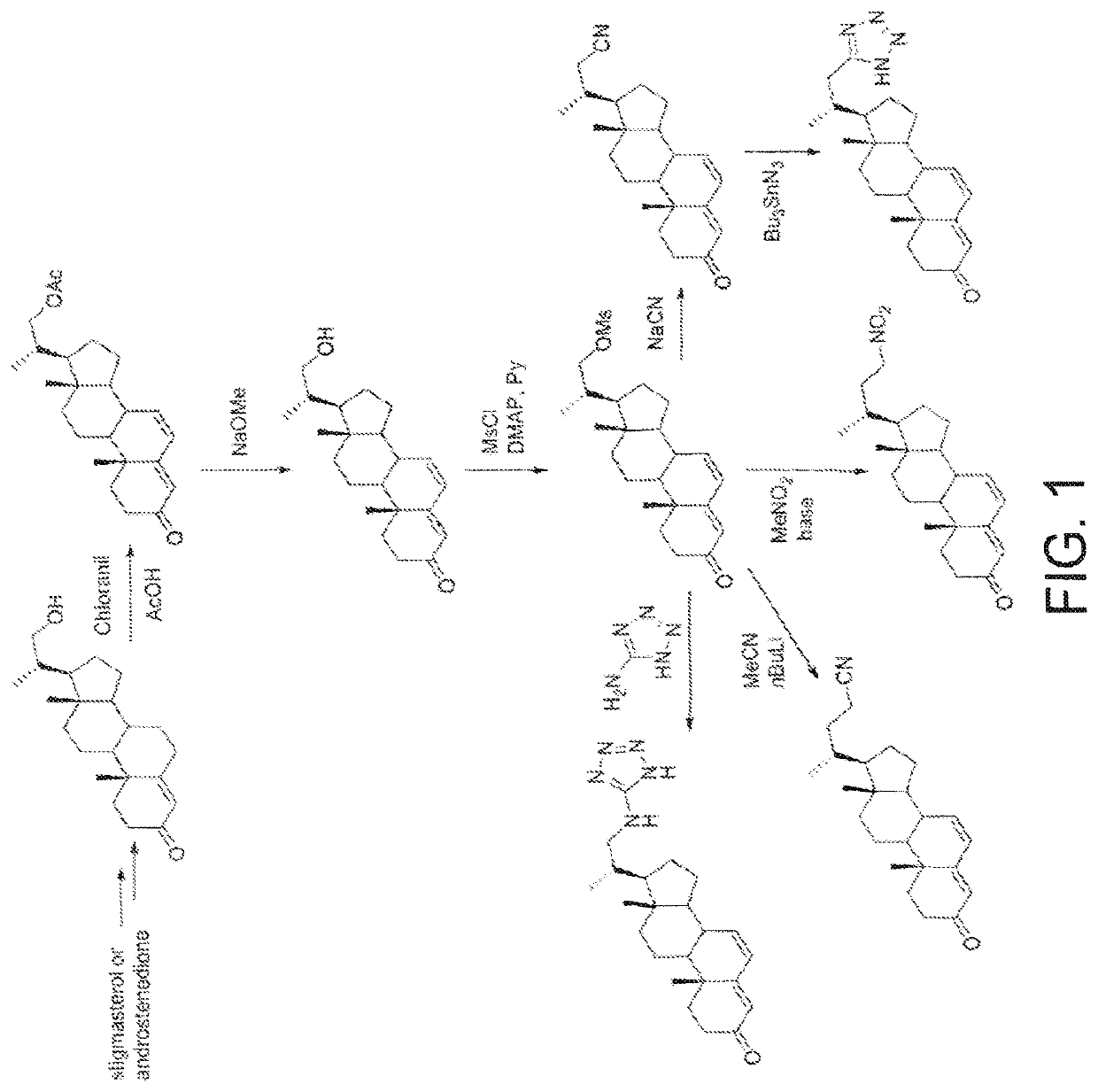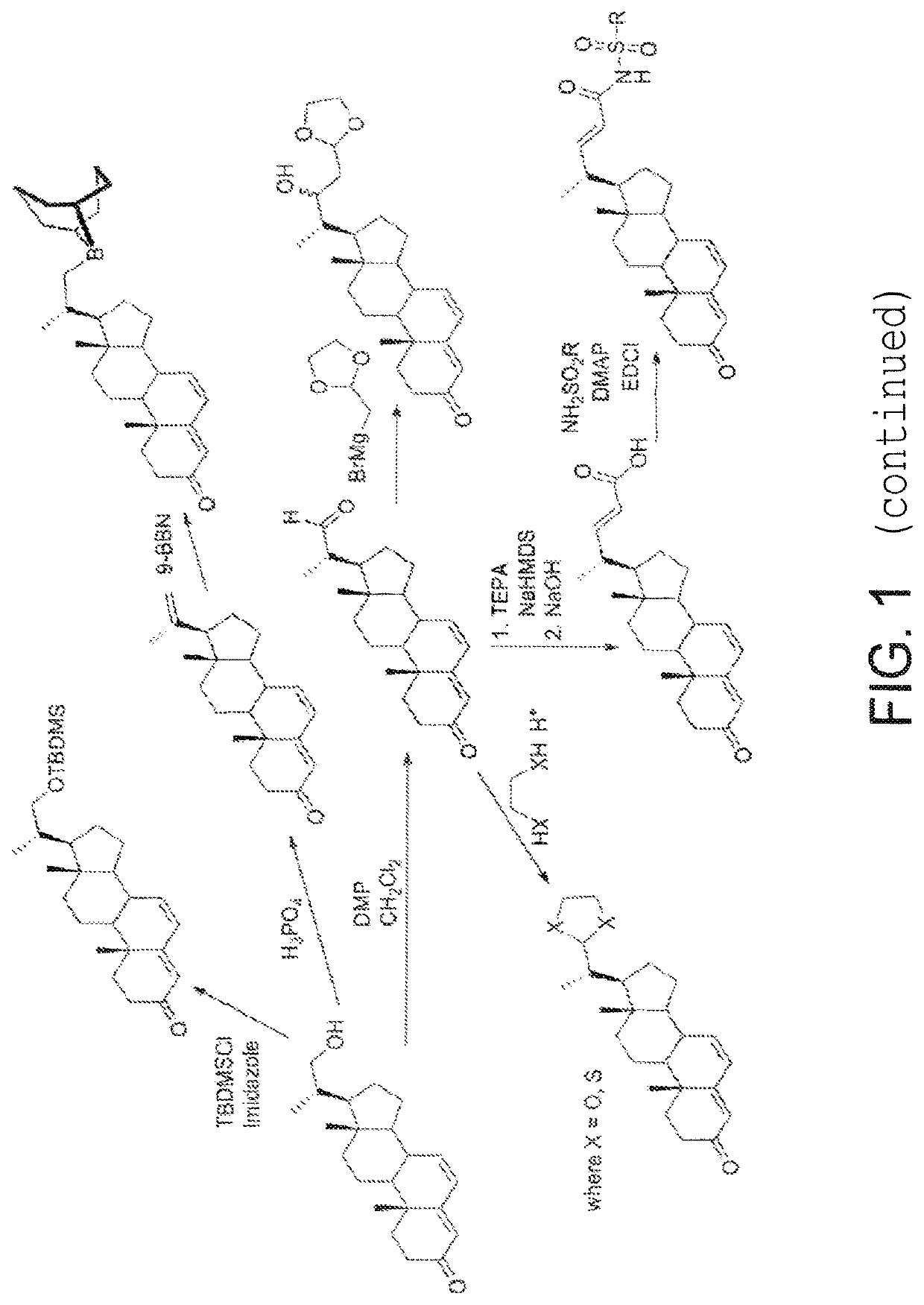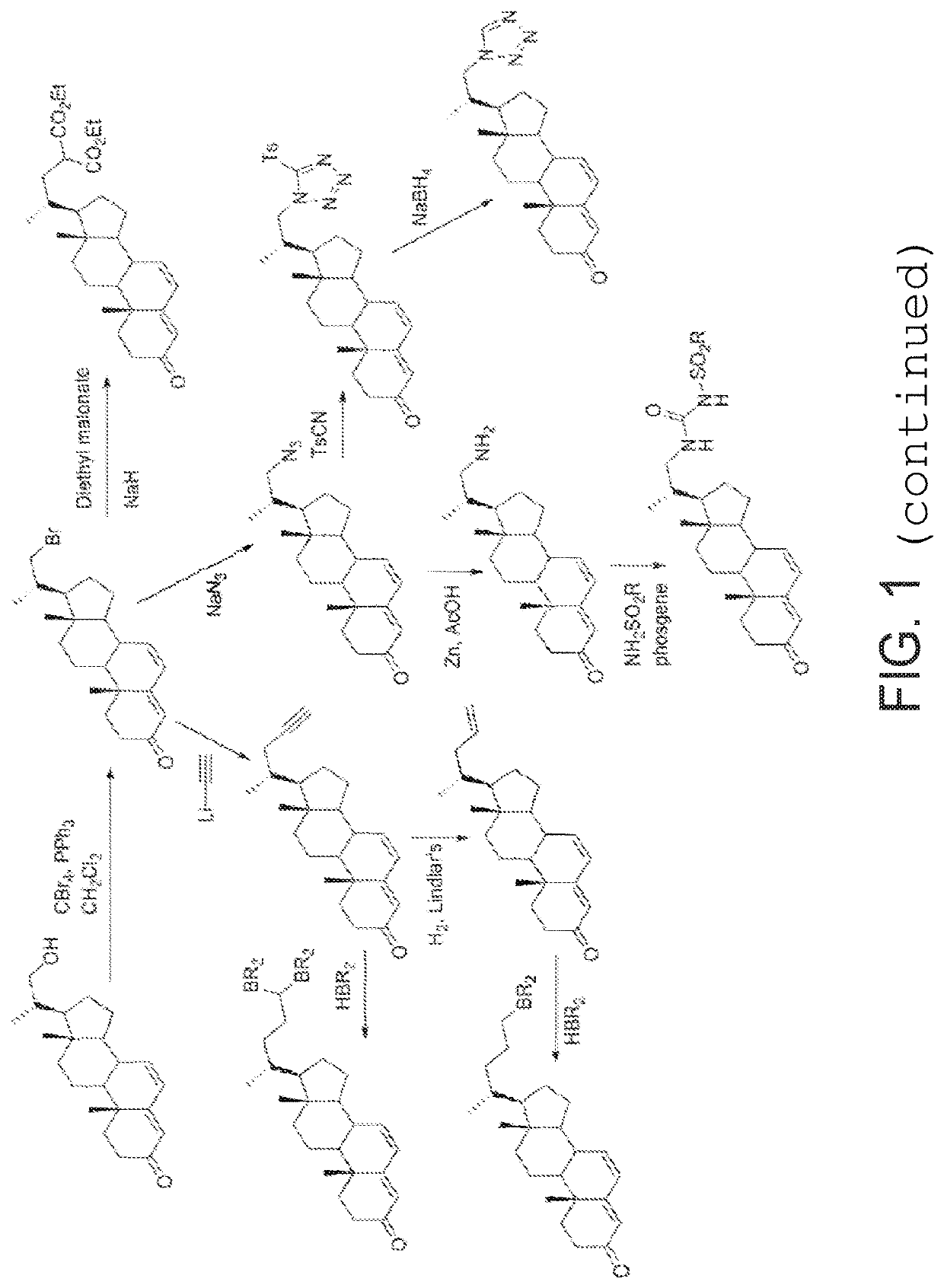Process and intermediates for the 6,7-alpha-epoxidation of steroid 4,6-dienes
a technology of alphaepoxidation and process, applied in the field of intermediates for the 6, 7alphaepoxidation of steroid 4, 6dienes, can solve the problems of low overall yield, 12 steps, and process which is currently used, and achieves low cost and availability of starting materials, limited availability of cholic acid and other bile acids, and low overall yield
- Summary
- Abstract
- Description
- Claims
- Application Information
AI Technical Summary
Benefits of technology
Problems solved by technology
Method used
Image
Examples
example 1
of (22E)-3-oxo-4,6,22-cholatrien-24-oic acid ethyl ester (IIA) from stigmasterol
[0623]
[0624]The starting material, (22E)-3-oxo-4,22-choladien-24-oic acid ethyl ester (compound (IIA)), was prepared from stigmasterol according to the method described by Uekawa et al in Biosci, Biotechnol, Biochem., 2004, 68, 1332-1337.
[0625]Compound (IIA) (1.00 kg, 2.509 mol; 1 eq) was charged to a reaction vessel, followed by AcOH (3 vol, 3.0 L) and toluene (1 vol, 1.0 L) with stirring. Chloranil (0.68 kg, 2.766 mol; 1.1 eq) was then charged and the reaction mixture heated to 100° C. and maintained at this temperature for 1-2 h (IPC by TLC on silica, eluent 3:7 EtOAc:Heptane; Starting Material: Rf 0.50, Product: Rf 0.46; visualise with anisaldehyde stain). The mixture was then cooled in an ice / water bath to 10° C. and the resulting solid was filtered off. The filter-cake was washed with premixed 3:1 AcOH:Toluene (4×0.5 vol) at 5° C.±4° C. and the filtrate concentrated in vacuo at up to 70° C. The res...
examples 2-8
3-oxo-4,6-choladien-24-oic acid ethyl ester (IIB) from deoxycholic acid
example 2
of (3α, 5β)-3-acetoxy-12-oxo-cholan-24-oic acid methyl ester (VIIB)
[0626]
[0627]To a solution of deoxycholic acid (referred to herein as compound (XB), 500 g, 1.27 mol) in MeOH (1.5 L) was charged H2SO4 (0.68 mL, 12.7 mmol) and the reaction heated to 64° C. until complete. The reaction was cooled to 55° C. and pyridine (2.06 mL, 25.4 mmol) was charged. MeOH (800 mL) was removed by distillation and the reaction cooled to 50° C. EtOAc (500 mL) was charged and the distillation continued. This co-evaporation was repeated until the MeOH content was 2SO4 (1500 mL) added maintaining the temperature below 25° C. The aqueous phase was removed and the organic phase washed with water (1.2 L), sat. aq. NaHCO3 solution (1.2 L×2) and water (1.2 L). AcOH (1.0 L) was charged to the organic layer, followed by NaBr (6.6 g, 63.5 mmol). Aq. 16.4% NaOCl solution (958 mL, 2.54 mol) was charged dropwise maintaining the reaction temperature below 25° C. The reaction was stirred until complete, then cooled t...
PUM
| Property | Measurement | Unit |
|---|---|---|
| mol % | aaaaa | aaaaa |
| temperature | aaaaa | aaaaa |
| temperature | aaaaa | aaaaa |
Abstract
Description
Claims
Application Information
 Login to View More
Login to View More - R&D
- Intellectual Property
- Life Sciences
- Materials
- Tech Scout
- Unparalleled Data Quality
- Higher Quality Content
- 60% Fewer Hallucinations
Browse by: Latest US Patents, China's latest patents, Technical Efficacy Thesaurus, Application Domain, Technology Topic, Popular Technical Reports.
© 2025 PatSnap. All rights reserved.Legal|Privacy policy|Modern Slavery Act Transparency Statement|Sitemap|About US| Contact US: help@patsnap.com



